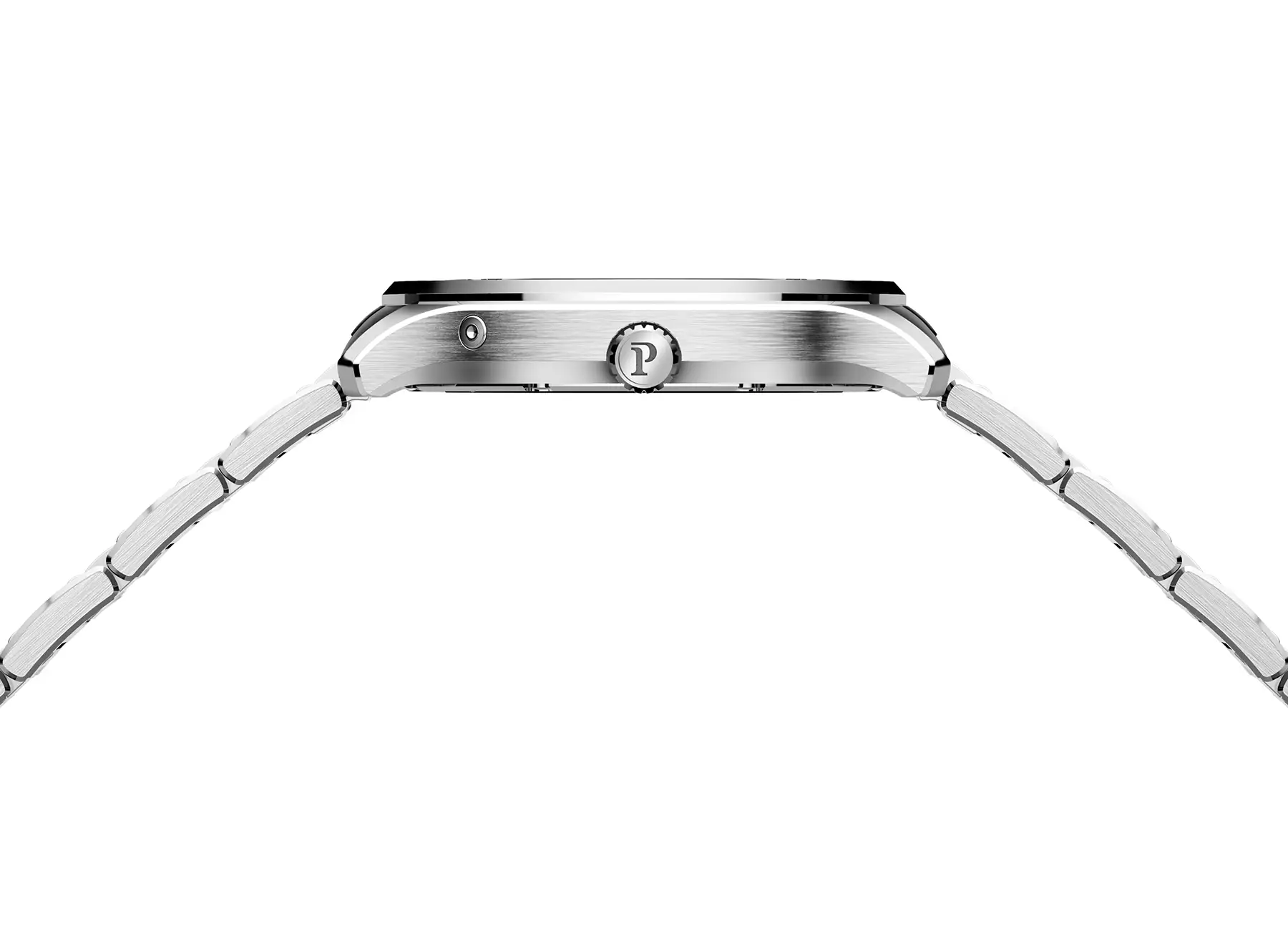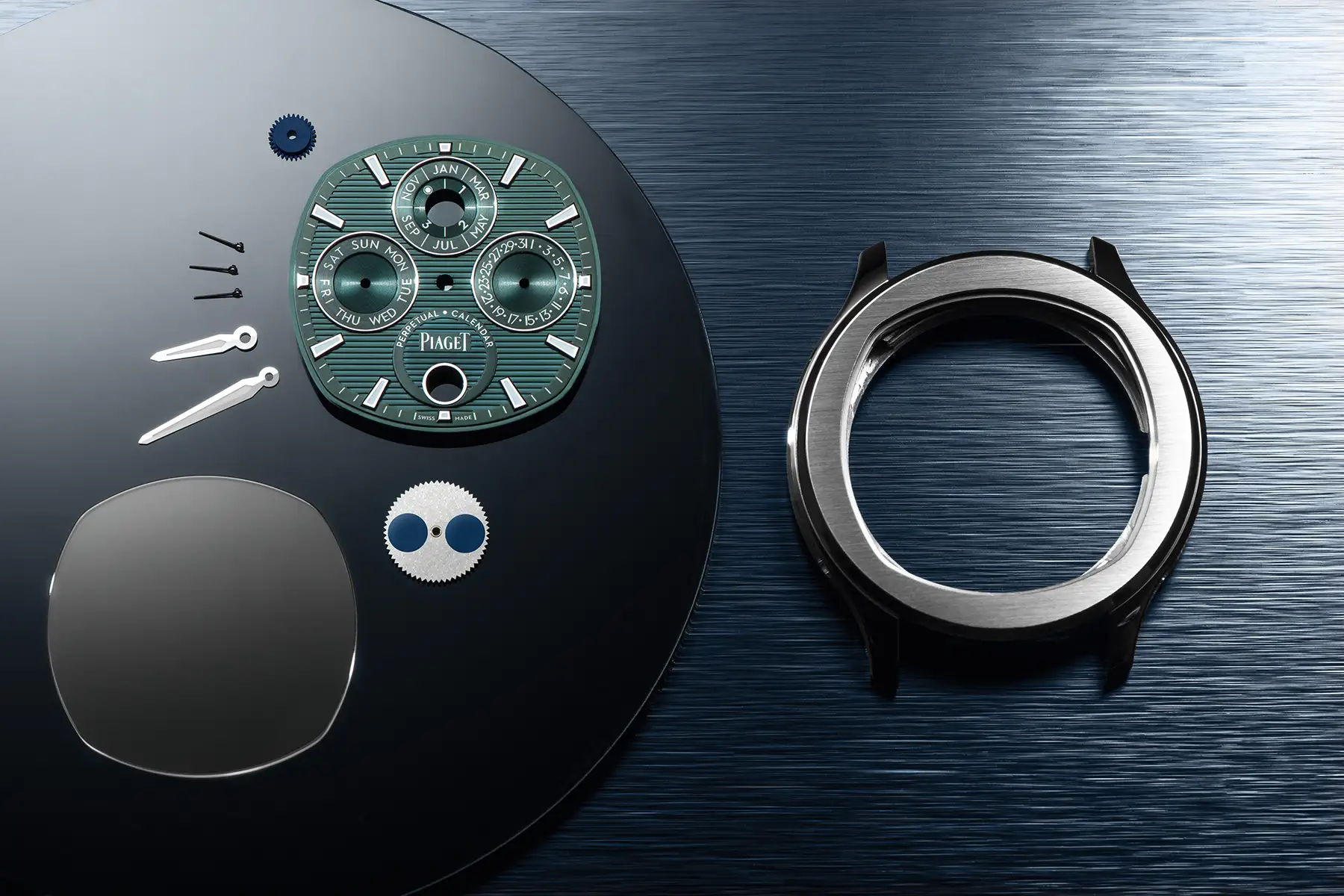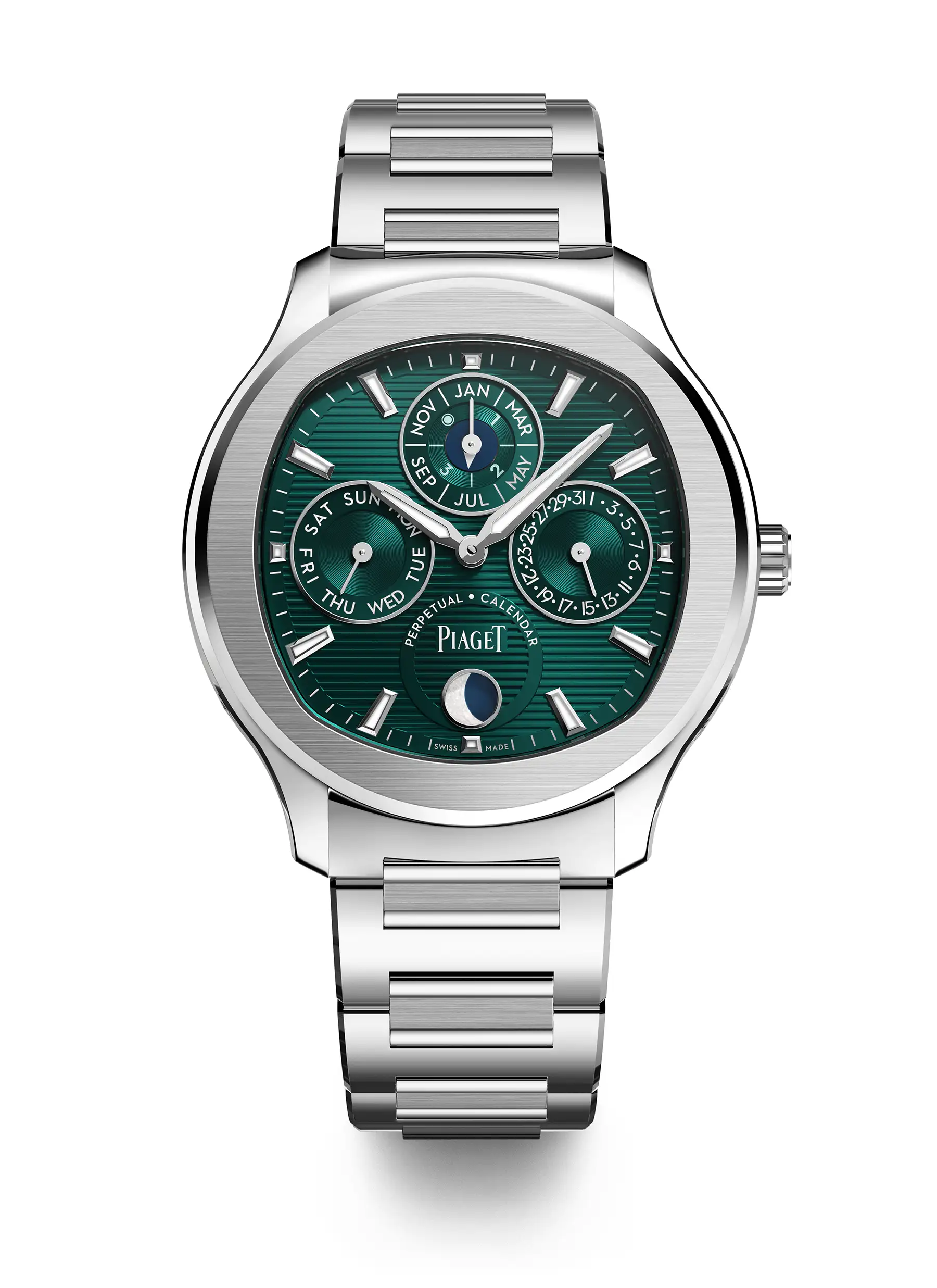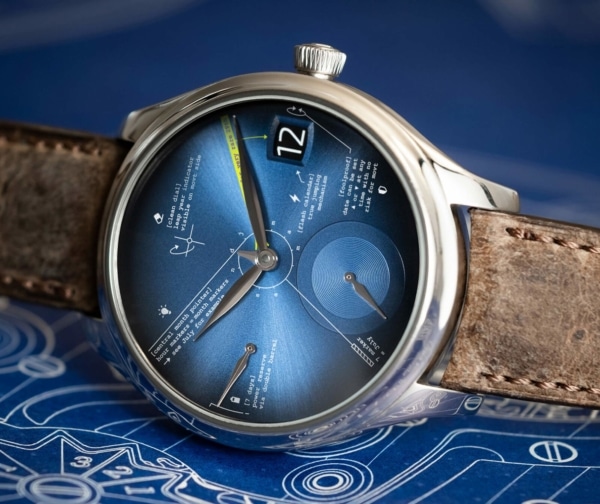The trend toward ultra-thin highly complicated watches has reached a fever pitch in recent years, and there’s no sign of that trend slowing anytime soon. Piaget has been at the forefront of ultra-thin watches for many decades, most recently claiming the world’s thinnest mechanical watch with their Altiplano Ultimate Concept in 2020 (which was subsequently broken by Bulgari, and then Richard Mille). This year, they’re returning to the ultra-thin game with a new Polo Perpetual Calendar that measures a mere 8.56mm in thickness. This marks the first appearance of the perpetual calendar complication within the current generation of the Polo, and it should come as no surprise that it works rather well.
The Piaget Polo was redesigned in 2016 with a more refined presentation of their sports watch language. The round case features a slightly squared, TV shaped dial opening creating just enough tension to set it apart in a crowd. This was a notable departure from earlier Polo designs, which have never been shy about embracing their era. The newest Polo design feels timeless to my eye, but history will be the judge there. The design has shown flexibility, with the openworked Skeleton Automatic, and even on the very high end housing the brand’s ornate minute repeater in this Polo Emperador.









 Featured Videos
Featured Videos














